Doppelgänger – Josh Durham
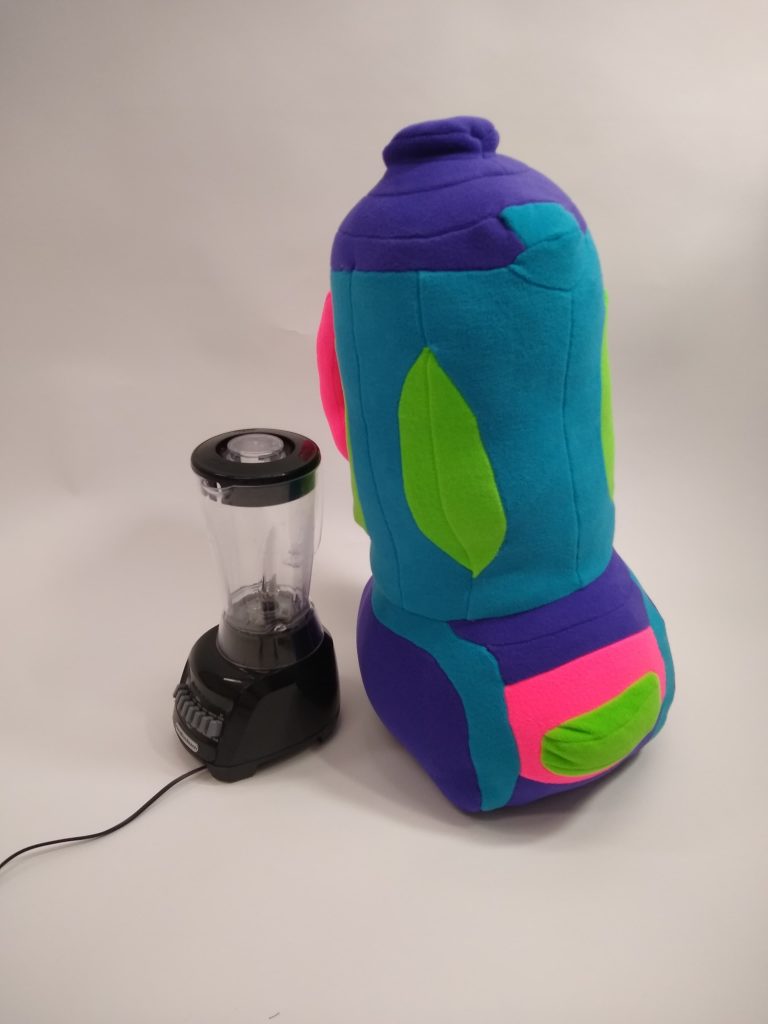
For my Doppelgänger project, I decided to duplicate a blender. I chose this object since I really enjoy the different curves and forms that make up the object, and the different curvatures of the object made it a difficult object to pattern. After creating a pattern, I scaled the pattern up to make a larger than life blender and then fabricated the object out of brightly colored fleece. The colors and materials for the object give it a warm and inviting feel, something that is not expected of a kitchen appliance. My biggest surprise in this assignment was the large amount of time it takes to pattern an object and create a new design from scratch. Spending more time at the patterning stages and making sure that I was carefully patterning the object paid off in the end, as the assembly and sewing process for the project was relatively straightforward once the pattern was finalized.
Pattern Making

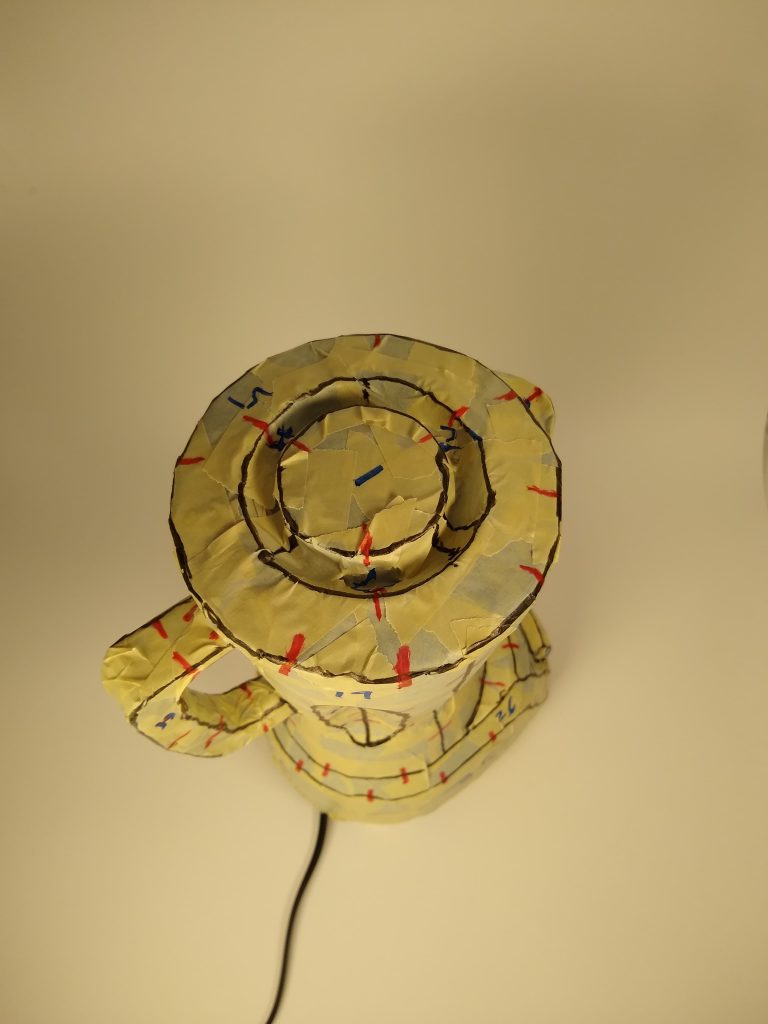
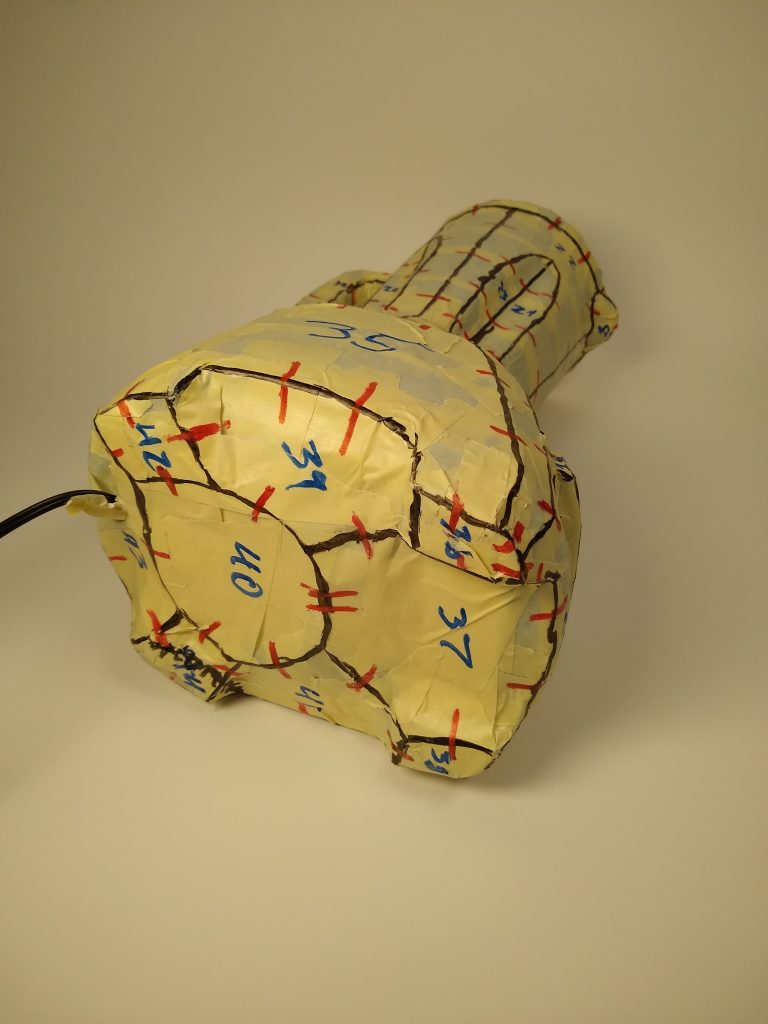

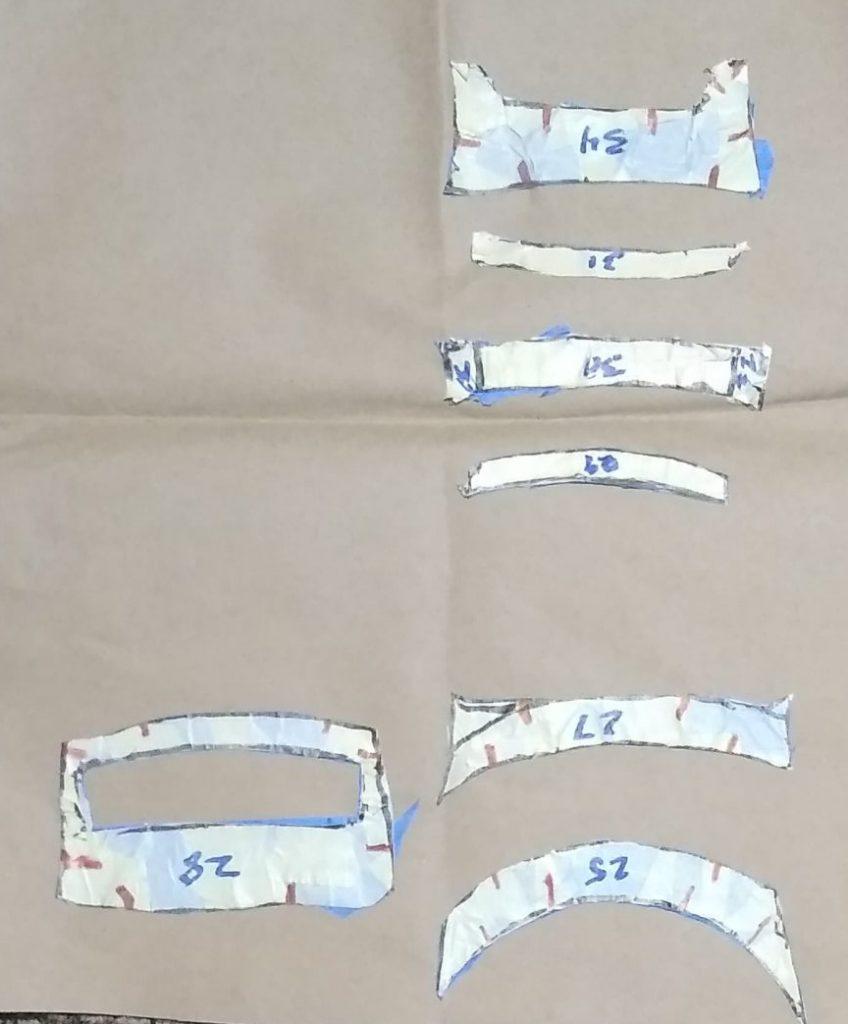
I created the pattern for my blender by using the taping technique discussed in class. It took about 4 hours to fully create the pattern and remove it from the blender. A few modifications I made to the blender are that the buttons on the front of the blender were simplified down to one single rectangle, and the bottom of the blender was simplified to have a more convex geometry than deal with all of the gaps and ridges on the bottom of the blender. After taping the entire blender, I took care in making sure to number and label every piece of the pattern, while also adding reference marks to know where pieces came together. The numbers ended up being very valuable, since when it came time to cut and assemble the pieces, several pieces were very similar but the numbering helped me pair up the correct pieces and avoid any major errors in assembly. After creating the pattern, all of the pieces were carefully cut out and placed on brown paper (as seen in the last image above). I then took images of all of the pattern pieces from the same distance, and scaled these images up by about 50% before printing the pattern out again. The main motivation for scaling the pattern up was that I was concerned about assembling the pattern when some of the pieces were very skinny and delicate, so scaling up allowed for these smaller pieces to be more manageable while also creating a more striking and bold form.
Final Assembly

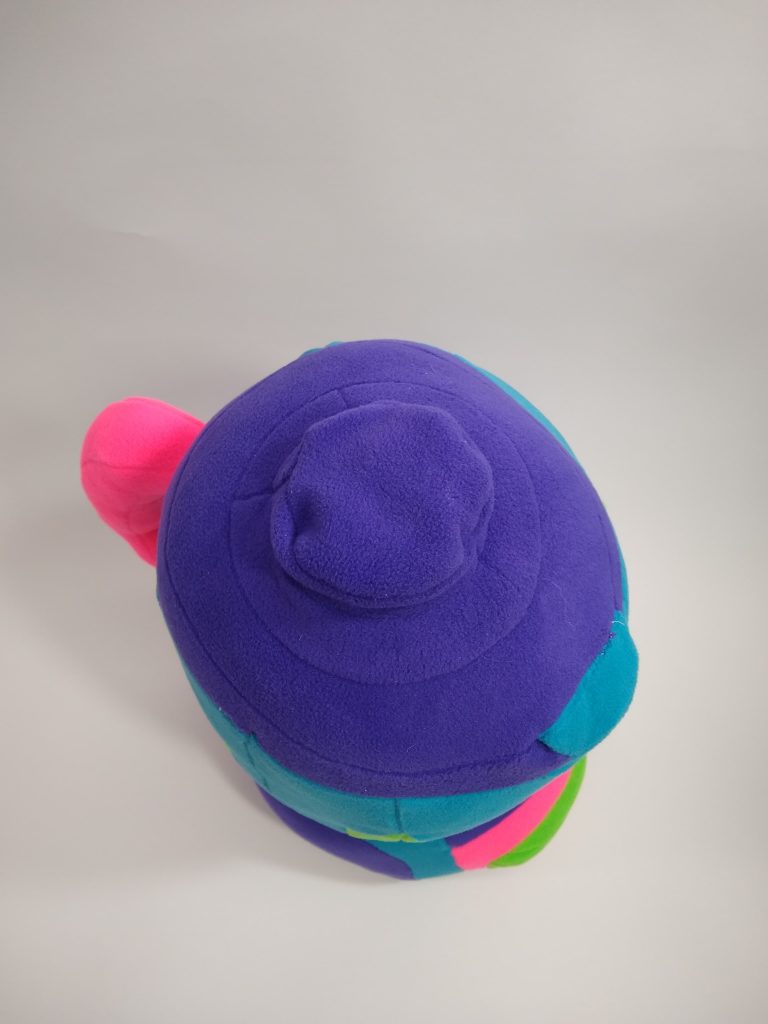



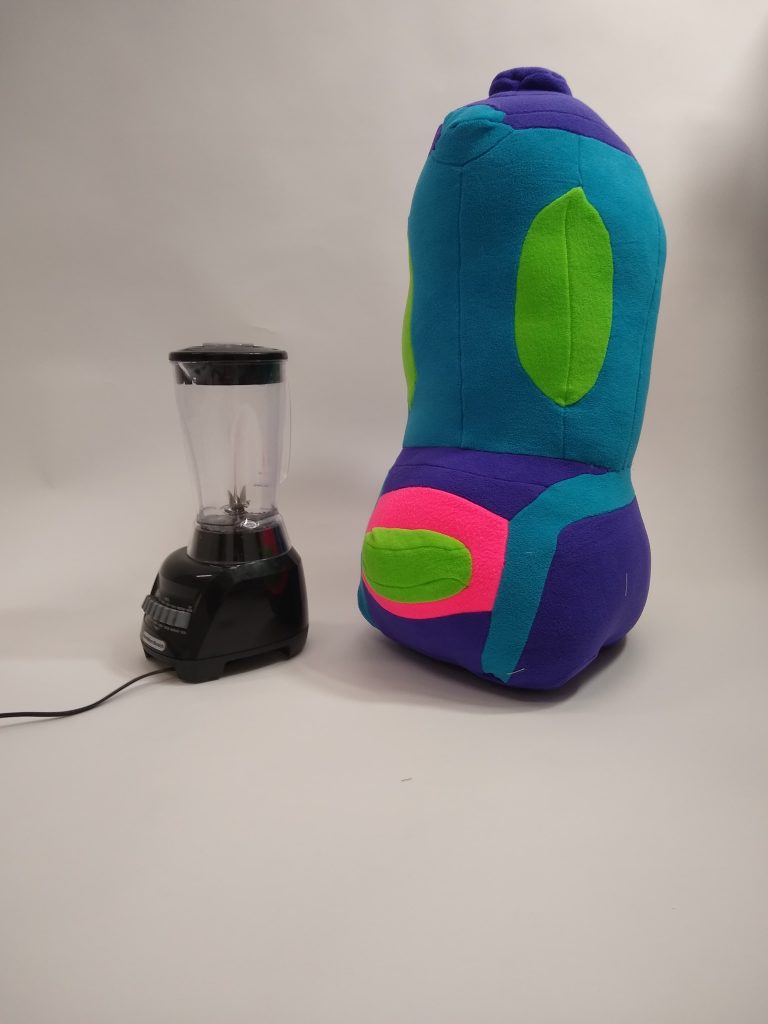
After cutting out all of the scaled up pattern pieces, the entire pattern was then transferred over onto colorful fleece. The entire pattern has almost 60 different pieces, so I was very careful in making sure that I kept track of each individual piece as well as the pattern that it came from. I mainly selected the colors for each individual piece of the pattern in order to create contrast between the container of the blender, the base, and the lid of the blender, while changing up the colors for some pattern pieces to add more striking details. After cutting out all of the pieces, it was about 9 hours of sewing to piece the entire project together. The assembled form looked very similar to the original blender and pattern before stuffing, but the addition of stuffing to the blender made it swell up quite a bit and lose the curves that made the original blender such an interesting shape. If I were to make this project again, I would make the blender out of a more rigid fabric than the fleece, since the fleece is very flexible and stretched out quite a bit when the form was stuffed. But I am still happy overall with look and feel of the piece, as it is representative of the original object that I wanted to duplicate.